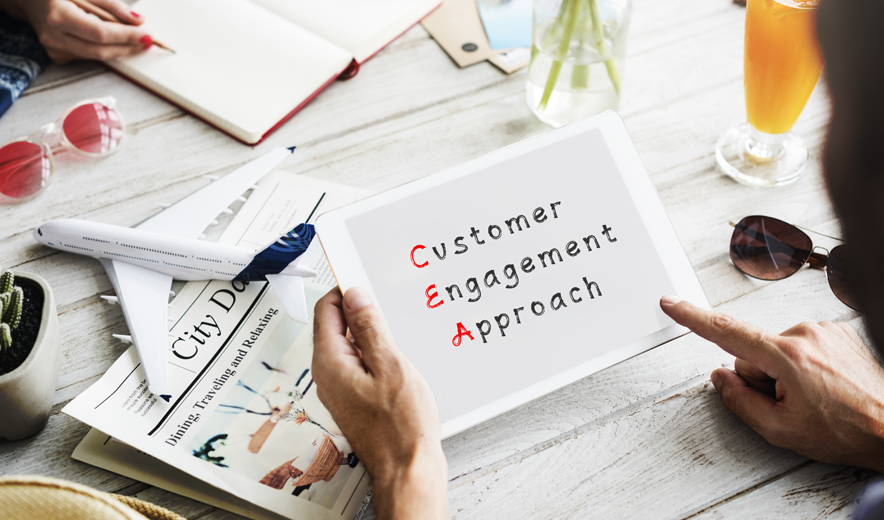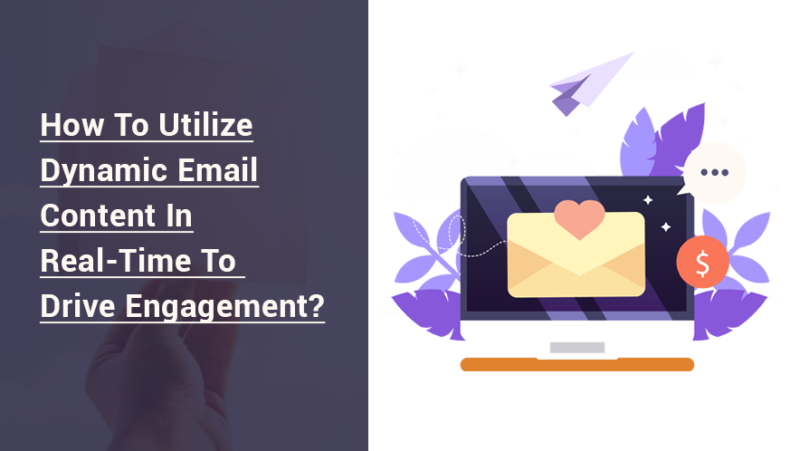With all the changing customer expectations, marketers now need to be more aware of what their customers expect from them and how. With the ever-growing customer demands, organizations need to cater to a certain level of service to succeed in their business. Whether you are a B2B, B2C, or startup, offering the best customer experience is the key to achieving marketing goals.
Brands that genuinely care about customer satisfaction can generate more conversions and, in return, higher ROI. Moreover, it helps marketers build long-term relationships with loyal customers who keep returning to that business and add sustainability.
If you are aiming for complete customer satisfaction, you should also consider listening to customer feedback and acting on it. This helps understand your customer expectation better to strategize a more personalized customer engagement strategy.
A personalized customer engagement strategy need not necessarily have to take grand measures. You can make your customers feel valued just by adding the right personalization. Remember, you also need to focus on cost-effectiveness and cannot overindulge in resources. Therefore you need to take measured steps to develop a personalized customer engagement strategy that will work for your business and its customers. Here are a few tips to keep your consumers engaged and offer a higher return to your business.
Crowdsource customer insight
When it comes to gaining more ideas on improving customer experience, there is no better resource than the customers themselves. One of the best ways to personalize a customer engagement strategy is to ask your customers what they expect from your brand and how and frame your strategy accordingly. You can also ask them if they need any change in the ongoing service and work on it if required. Well, you might be missing something that your customers can see.
Customers these days make a detailed study before investing in a brand, and thus, they have a good knowledge of what they want and deserve. And the best part is that they love sharing their opinion on their needs. Therefore, crowdsource customer insights from your customers for perfect personalization. You can share product development strategies on social media, ask people for their input, or just ask for genuine feedback.
Engage using social media
Social media has become one of the most reliable platforms for communication, not only for brands but also for customers. Since your customers spend a lot of time on social media, it is the best method to attract their attention. And if you are not using social media right, you might be missing out on many conversions. It is crucial to engage consistently with consumers via social media because that is what customers these days expect and do.
Social media helps you connect directly with your target market as only those interested in your brand will follow you. This helps filter the crowd to focus more on personalization and make your customers feel valued. Further, you need to be active on social media and get back to any inquiry made at the earliest.
Generously reward your customers
One of the best ways to keep your customers coming back to you is by offering them direct incentives. Consumers like discounts and freebies, but that does not mean you can provide them with any random offer. You need to make a detailed study of their interest by monitoring their browsing history and delivering relevant offers that will interest them. It is not necessary to offer a huge discount, but try offering relevant discounts. Make sure you understand the position of every customer’s lifecycle and personalize discounts based on it.
Welcome every criticism
As a business continues its journey, it can come across several criticisms that cannot be avoided. But whatever it is, you need to keep your calm and respond graciously to them. Train your customer support team to hold their nerve when dealing with customer feedback. The key to good customer engagement is accepting everything your customers say, be it good or bad. Any statement that can bring down your company’s image can trigger the issue leading to a bad reputation. Thus welcome every criticism as an opportunity to improve your business. And quite often, customers are also correct, and maybe you need some change in the system that is invisible to you.
Develop profiles for your target customers
While designing your website, you need to keep your customers in mind. Moreover, it helps if you know what kind of customers you are targeting. You can use this opportunity to create profiles of typical target customers. Analyze the demographics you are aiming for and what they expect from your business. You can use data analytics to get a better idea of where your customers are coming from, what they are searching for, and how long they engage with different parts of your site. Depending on the situation, you can also tweak your offerings to match customer preferences. Moving on, you can provide several methods such as chatbots to help your visitors navigate your website and easily find what they are looking for.
Utilizing Data Analytics to Inform Engagement Strategies
Data is the backbone of any successful tailored engagement approach. Analyzing customer behavior, preferences, and interactions provides invaluable insights. These insights can guide businesses in understanding which engagement channels are most effective, what content resonates, and how to optimize the customer journey for maximum conversions.
Seamless Omni-channel Experience: Bridging the Gap
Customers interact with businesses through multiple touchpoints. A seamless omnichannel experience ensures that the transition between these touchpoints is smooth and consistent. Whether a customer starts their journey on social media, then moves to a website, and finally makes a purchase in-store, maintaining a cohesive experience across these channels enhances engagement and boosts conversions.
Humanizing Customer Interactions: The Role of Chatbots
Chatbots have revolutionized customer service by providing instant responses and solutions. While automation is efficient, injecting a touch of humanity into chatbot interactions can enhance engagement. Using personalized responses and empathetic language can create a more genuine and satisfying customer experience.
Nurturing Leads through Drip Email Campaigns
Email marketing continues to be a potent tool for engaging customers. Drip email campaigns involve sending a series of targeted emails over time, nurturing leads, and guiding them toward making a purchase. By offering valuable insights, tips, and exclusive offers, businesses can keep their brand at the forefront of the customer’s mind.
Interactive Website Design: A Gateway to Enhanced Engagement
A well-designed website can significantly impact user engagement. Interactive elements like quizzes, polls, and interactive product showcases capture attention and encourage visitors to explore further. A user-friendly and visually appealing website creates a positive impression and increases the likelihood of conversions.
Building Community and Fostering User-Generated Content
Community-building is about creating a sense of belonging among customers. Brands can establish online communities where customers can share experiences, ask questions, and provide feedback. User-generated content, such as reviews and testimonials, not only builds trust but also provides social proof, a powerful motivator for conversions.
Measuring Engagement and Conversion Metrics
To refine engagement strategies, it’s essential to measure their effectiveness. Metrics such as click-through rates, time spent on site, and conversion rates provide valuable insights into what’s working and what needs improvement. Regular analysis of these metrics allows for data-driven adjustments to optimize engagement efforts.
Adapting Strategies Based on Engagement Analytics
Engagement strategies are not set in stone. Analyzing engagement analytics reveals trends and patterns that can guide adjustments to the approach. Businesses should be agile in adapting strategies based on changing customer behaviors and preferences, ensuring continuous improvement.
Overcoming Challenges in Implementing Tailored Engagement
Implementing tailored engagement approaches comes with its challenges. Overcoming resistance to change, managing data privacy concerns, and maintaining consistency across channels can be daunting. Addressing these challenges head-on through transparent communication and robust data protection measures is crucial for successful implementation.
The Future of Customer Engagement: AI and Beyond
The future of customer engagement holds exciting possibilities, with artificial intelligence playing a pivotal role. AI-driven chatbots, predictive analytics, and hyper-personalization are on the horizon. By harnessing the potential of AI, businesses can elevate their tailored engagement strategies to new heights.
In the age of digital marketing, enhancing conversions requires a customer-centric approach. Tailoring engagement strategies to the unique preferences and behaviors of different customer segments is the key to fostering meaningful interactions that drive conversions and build lasting brand loyalty.Be a part of our community for free and access the best resources, trends, and new technologies from peers and industry experts. You can also check out our other awesome blogs over here.




